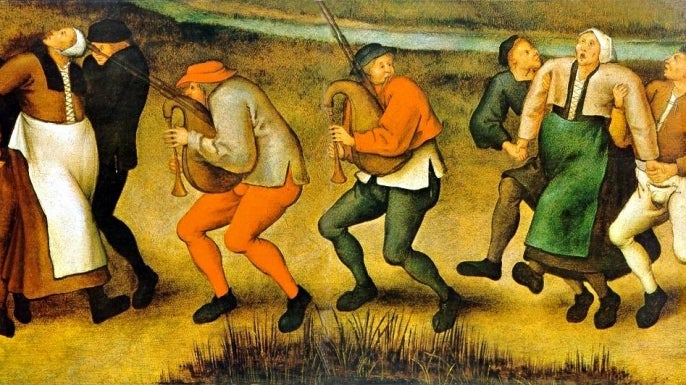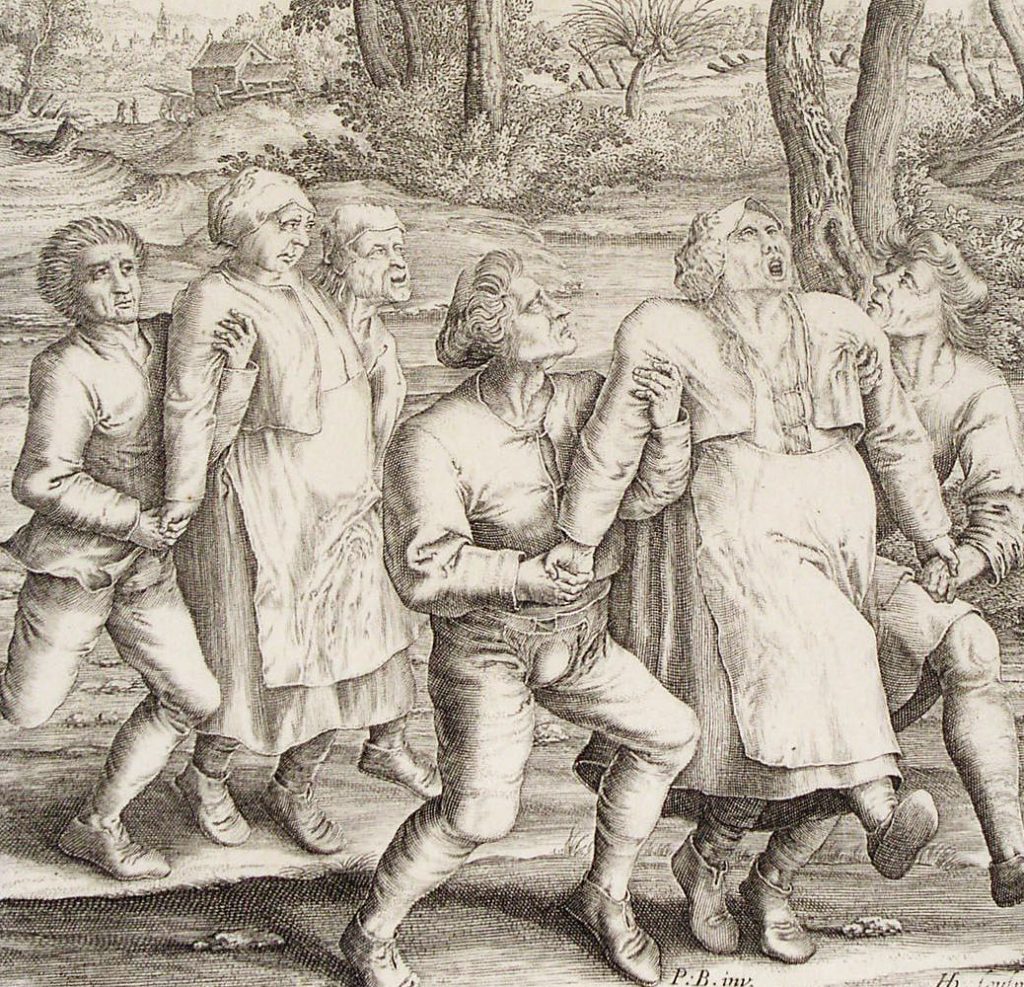In the sweltering summer of 1518, the streets of Strasbourg witnessed one of history’s most bizarre phenomena. A woman named Frau Troffea stepped into the street and began dancing feverishly, her movements wild and uncontrolled. Little did anyone know this would spark a hysteria that would grip hundreds in its mysterious dance.

Image credit: History.com
What started with one person soon became dozens as more townspeople joined the endless dance. Within a week, more than 30 people were dancing day and night, their feet bloody and bodies exhausted. The authorities, baffled by this strange occurrence, watched helplessly as the number of dancers grew to hundreds by August.

Image credit: Public Domain Review
The dancers moved with an almost supernatural energy, some until they collapsed from exhaustion. Many suffered heart attacks, while others succumbed to strokes and sheer physical exhaustion. Despite their bodies screaming for rest, they continued their manic dance as if possessed by an unseen force.
Local physicians of the time were completely mystified by this dancing fever. They attributed the condition to hot blood, suggesting that more dancing would cure the affliction. The town officials even constructed wooden stages and hired musicians, believing this would help the dancers recover more quickly.
The desperate city council tried various interventions to stop the madness. They banned music in the city, hoping it would calm the dancers. When that failed, they moved the afflicted to a shrine of Saint Vitus, believing prayer might end their torment. The dancers continued their frenzied movements regardless of these attempts.
Modern historians and medical experts have proposed various theories to explain this medieval dancing mania. Some suggest ergot poisoning from contaminated grain, while others point to mass psychogenic illness triggered by extreme stress. The region had suffered from famine and disease outbreaks, creating perfect conditions for mass hysteria.
The dancing plague finally subsided in September 1518, leaving behind a transformed community. This peculiar episode became deeply embedded in European folklore and medical history. It stands as one of the most well-documented cases of mass hysteria, showing how psychological distress can manifest in extraordinary ways.
The legacy of the dancing plague continues to intrigue scholars and casual readers alike. It serves as a reminder of humanity’s vulnerability to mass psychological phenomena and the complex interplay between mind and body. This medieval mystery remains a fascinating example of how social stress can create unprecedented group behaviors.
References:
History.com – What Was the Dancing Plague of 1518? – link
The Public Domain Review – The Dancing Plague of 1518 – link
Categories: Do you know, Historical Mysteries, Mass Hysteria, Medieval History, Unexplained Phenomena
Tags: Dancing Plague, Historical Mysteries, Mass Hysteria, medical history, Medieval History, psychological phenomena, social hysteria, Strasbourg
Religion: Christianity
Country of Origin: France, Germany
Topic: Historical Mystery
Ethnicity: European

